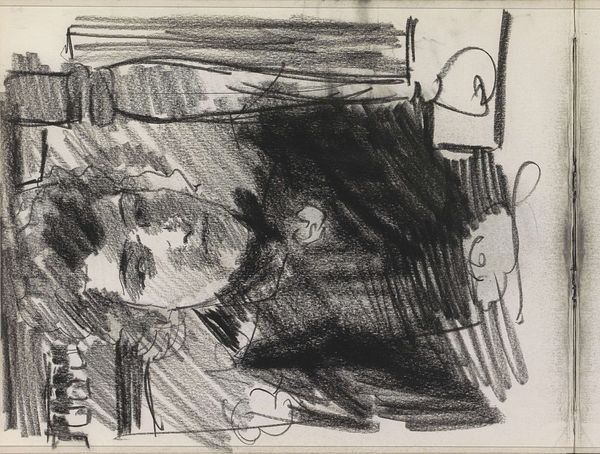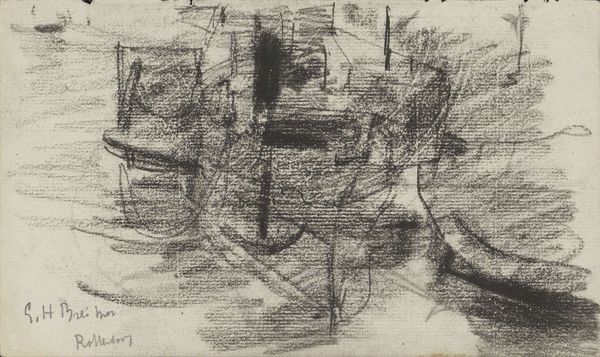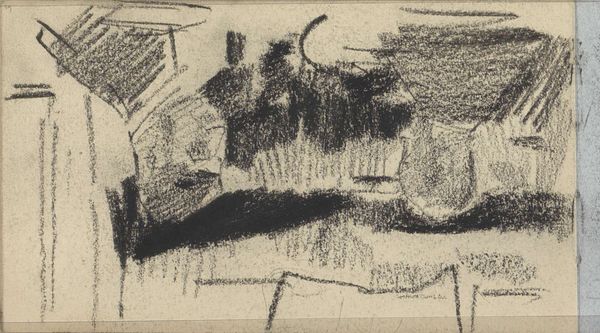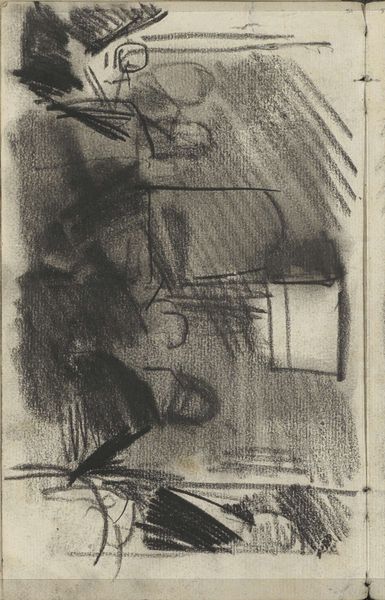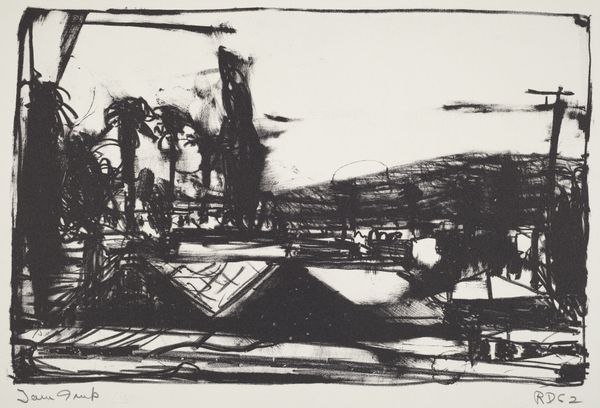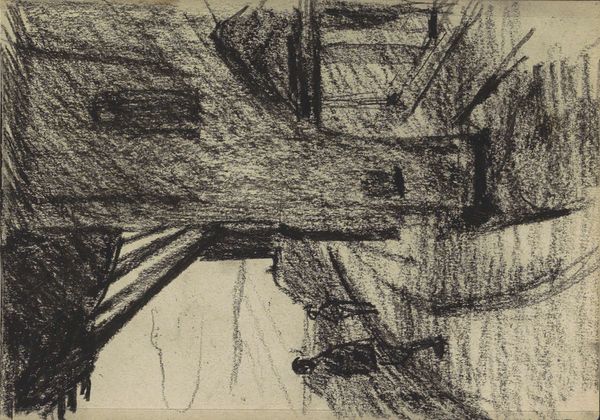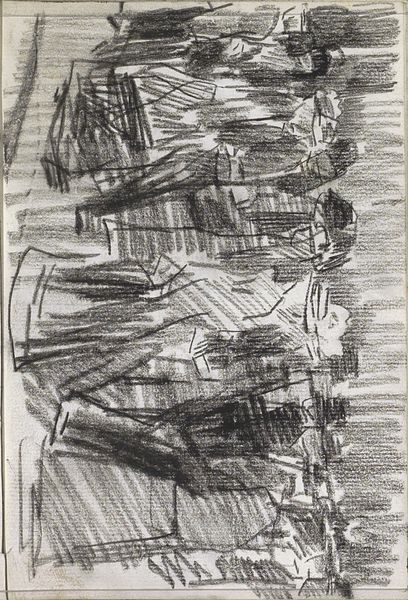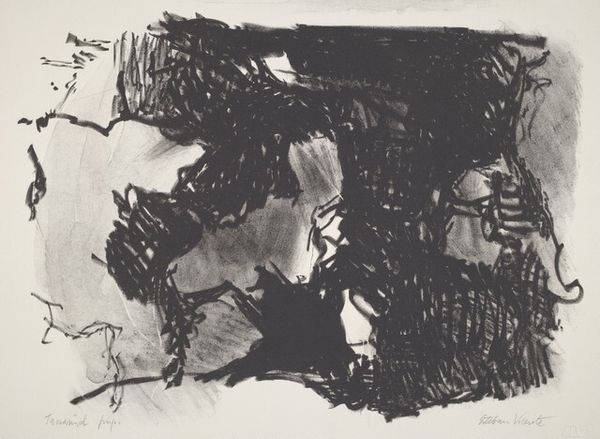
Copyright: Rijks Museum: Open Domain
Curator: Isaac Israels created this pencil and graphite drawing titled Figuren in een straat met lantaarns, bij nacht, sometime between 1875 and 1934. Editor: The title is apt—this drawing certainly conveys a sense of nighttime in a city, albeit a rather grim and oppressive one. There is a disquieting atmosphere evoked by the dark, scratchy strokes. Curator: Yes, let’s unpack that oppressive feeling. Note how Israels uses line and shadow. See the bold strokes suggesting the looming buildings and streetlights, yet there is a deliberate obscuring of detail. It’s this interplay between the suggested and the hidden that constructs the visual experience. Editor: That obscurity could represent so much—the anonymity of city life, perhaps the hidden struggles of the urban poor during that era. The figures are rendered as mere suggestions; their individual identities swallowed up by the darkness. It prompts a discussion about the socio-economic context. Who were these people? Were they the working class? Curator: Interesting! You see societal commentary where I see compositional technique. Look at the contrast between the light reflecting on what appear to be advertisements and the oppressive black masses surrounding them. It is formally masterful, guiding the eye through calculated tensions and resolutions. Editor: But art never exists in a vacuum. Even this seeming "formal mastery" speaks to the larger structures that upheld certain experiences while marginalizing others. What narratives did Israels choose to highlight, and whose stories are conspicuously absent from the visible spectrum of this night scene? It also could speak to the overwhelming feeling immigrants would feel first encountering modern advertising. Curator: I see your point, but perhaps that’s an imposition of contemporary reading. The artist also was possibly merely documenting the evolving face of urban landscapes and engaging in an experimentation with form in rendering fleeting moments and urban moods. Editor: Maybe so, yet I cannot divorce my viewing from what I know about the era—rising urbanization, social stratification, and the general atmosphere of anxiety about modernity. Ultimately, that unresolved tension makes it a work I find engaging and difficult in equal measure. Curator: An observation that reflects its lasting appeal.
Comments
No comments
Be the first to comment and join the conversation on the ultimate creative platform.

